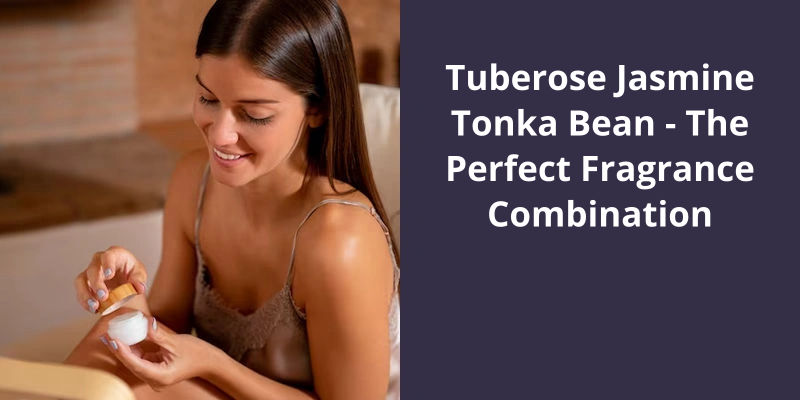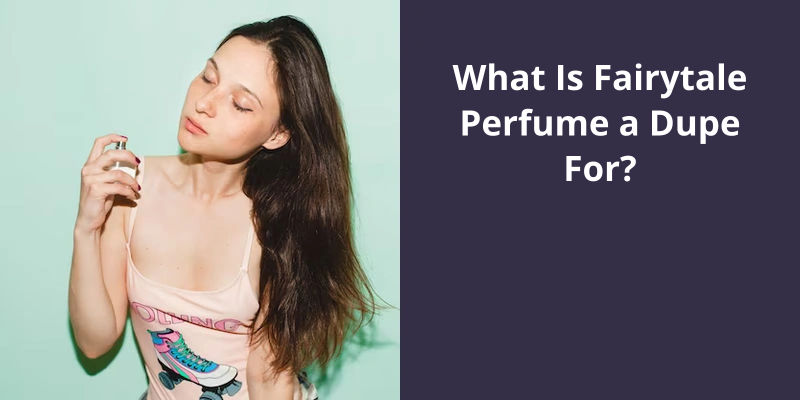Tuberose, Jasmine, and Tonka Bean are unique elements often used in perfumery due to their distinct and contrasting aromas. Tuberose, with its rich, floral scent, often delivers an intoxicating and velvety undertone to fragrances. Jasmine, another floral note, is sweeter and more romantic, adding a layer of complexity and allure. Lastly, the Tonka Bean, with its warm, vanilla-like smell, provides a soothing base note that balances out the potent floral ingredients, creating a perfectly harmonious fragrance combination. Each component complements the others, resulting in a fragrance that is layered, sophisticated, and enticing.

What Chemical Is in Tonka Bean?
Coumarin is a fragrant organic compound that’s widely used in perfumes, detergents, and insecticides. It’s also used as a blood thinner and has anti-inflammatory properties. However, coumarin can be harmful in large doses, and in some countries, tonka beans are banned or restricted due to their high levels of this chemical.
The use of tonka beans in food and drink is a controversial issue, with some chefs and bartenders citing their unique and complex flavour as a reason to use them despite the potential health risks.
However, with several countries banning or restricting the use of tonka beans, it remains to be seen whether this trend will continue to gain momentum.
Some experts recommend using no more than one-quarter of a tonka bean in a recipe to avoid exceeding safe levels of coumarin intake.
What Are the Potential Health Risks of Consuming Tonka Beans?
Tonka beans contain coumarin, a natural compound that can be harmful to the liver in high doses. Consuming large amounts of tonka beans or products made with tonka beans may cause liver damage and other adverse health effects, including blood thinning and potential toxicity. Therefore, it’s recommended to consume tonka beans in moderation or avoid them altogether if you’ve liver problems or taking blood-thinning medications.
Tonka bean, with it’s unique and complex flavor profile, opens up a world of possibilities when it comes to pairing with other ingredients. From sweet fruits to bold spirits, tonka’s versatility has resulted in a wide range of delicious combinations that will tantalize your taste buds. Whether you’re looking to elevate your dessert game or mix up a creative cocktail, tonka bean is a worthy addition to your pantry.
What Pairs With Tonka Bean?
In the culinary world, the versatile tonka bean is often used as a substitute for vanilla due to it’s similar sweet, rich flavor profile. Paired with chocolate, tonka elevates the earthy cocoa notes to a luxurious experience. Tonka is also a perfect partner for creamy desserts like panna cotta or ice cream.
When it comes to savory dishes, tonkas warm, spicy aroma works best with meats such as venison or beef. It’s intriguing flavor complements gamey, hearty proteins and adds depth to sauces and marinades. Keep in mind that tonka is a potent spice, and a little goes a long way.
The fruity notes of tonka make it a surprising match for summer fruits like strawberries and apricots. The floral, vanilla undertones of the bean are intensified when mixed with the tartness of strawberries and the sweetness of apricots. Tonkas unique flavor also makes it a fascinating addition to cocktails, adding complexity and depth to classic whiskey and cognac drinks.
It pairs remarkably well with coconut, adding a nutty dimension to the tropical flavor. Tonka also enhances the perfumed notes of flowers like lavender and rose, making it a go-to ingredient for homemade bath and beauty products.
Is Tonka Bean a Top Note?
Tonka bean is a popular ingredient in the fragrance industry. It’s obtained from the Tonka tree, mainly found in South America, and is used as a fixative in perfumes. However, whether tonka bean is a top note or not is debatable.
Traditionally, top notes are the first scents perceived in a fragrance. They’re the lightest and most volatile components, and typically last for the first hour or so of wear. As such, top notes are often used to make a lasting first impression. Some commonly used top notes include citrus, floral, and herbal scents. Tonka bean, on the other hand, has a heavier and more long-lasting scent profile, suggesting that it may not be a top note.
It can also be paired with lighter notes such as bergamot and neroli to create a more airy top note effect.
It’s sweet and warm aroma can add depth and complexity to any fragrance composition, and it’s popularity in the industry speaks to it’s versatility.
It’s rich aroma has a timeless appeal that can add a touch of luxury and sophistication to any scent.
The History and Cultural Significance of Tonka Bean in South America and Beyond
The tonka bean has a long and culturally significant history in South America and beyond. It’s been used for a variety of purposes, such as in traditional medicine, as a flavoring in food and beverages, and even as an aphrodisiac. Despite it’s popularity, the tonka bean has also been the subject of controversy due to safety concerns regarding it’s high coumarin content. Nevertheless, it remains an important part of South American culture and cuisine today.
The unique scent profile of tonka bean has caught the attention of many enthusiasts and experts in the fragrance industry. With it’s complex combination of sweet, spicy, nutty, herbaceous, and woody notes, it’s no surprise that some people find it to be seductive. But what makes tonka bean so alluring? Let’s explore the various properties of this captivating aroma and it’s potential for creating intoxicating scents.
Is Tonka Bean Seductive?
Theres no denying that tonka bean is a powerfully aromatic ingredient that’s been used in fragrances and perfumes for centuries. It’s sweet and nutty scent is achieved through a complex chemical composition, making it a popular choice for both mens and womens fragrances.
The bean itself has been used in traditional medicine for centuries and is said to have powerful aphrodisiac properties. Whether or not there’s any scientific evidence to support this claim, tonka bean has long been associated with sensuality and desire.
But with great power comes great responsibility, particularly when it comes to seduction. But overuse can lead to overpowering scents that can be too strong for some noses.
Conclusion
These three ingredients each bring their own unique characteristics to the mix, blending together seamlessly to create a scent that’s bold, sensual, and unforgettable. Together, they create a fragrance that evokes feelings of romance and elegance.





